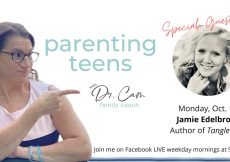With child care at the centre of the discussion in 2021, this election is more important than ever for Canadian families.
The pandemic triggered Canada’s first “she-cession,” where women lost the majority of the employment—particularly lower-earning women, who also may be racialized, single mothers, precariously housed and/or of precarious status. Economic recovery from this pandemic must be a “she-covery” and child care is crucial for women to re-enter the workplace, or to continue working.
Liberals
In the 2021 budget, the Liberal Party promised more than $27.2 billion (over five years) towards establishing a national child care program that promises $10-a-day child care. This plan continues to be a major plank of their re-election campaign.
To date, the Liberals have signed agreements with eight provincial and territorial governments (B.C., Yukon, Saskatchewan, Manitoba, Quebec, Nova Scotia, P.E.I, and Labrador and Newfoundland), which would result in a 50 percent cut in child care fees next year, with the goal to reach that $10-a-day threshold sometime in the next five years.
To increase capacity, the Liberals plan to build 250,000 new high-quality child care spaces, hire 40,000 more early childhood educators, work with Indigenous partners to ensure Indigenous children have access to culturally appropriate child care, and enact federal child care legislation to strengthen and protect a Canada-wide system.
Conservatives
Canada’s Conservative Party is taking a different approach to reducing child care costs. Party leader Erin O’Toole has said that despite signed agreements, a Conservative government would scrap plans for $10-a-day child care and instead create a refundable tax credit that would cover up to 75 percent of the cost of child care for lower-income families.
This would be done by converting the existing Child Care Expense Deduction (the line on your tax form where you put how much you spent on child care each year) into the proposed tax credit. The Parliamentary Budget Office estimates that this plan would cost Canadians $2.6 billion over the next five years.
The child care tax credit would be claimable by anyone, regardless of income level, but according to analysis done by Lindsay Tedds, Gillian Petit and Tammy Schirle for Policy Options, only child care costs up to $8,000 would be eligible for the credit.
The Conservative plan does not specify any commitments about expanding the number of child care spaces, nor does it mention increasing the number of early childhood educators.
NDP
Like the Liberal Party, the New Democrats are promising $10-a-day child care, which would leverage the existing agreements with provinces and territories to facilitate this shift. While the Parliamentary Budget Officer didn’t provide a cost for this plan, given that the NDP would be using the Liberal’s blueprint, it’s safe to assume that the costs would be similar.
In addition to $10-a-day child care, the New Democrats want to save not-for-profit child care centres, create enough spaces in order to avoid lengthy wait lists, and ensure that early childhood educators are paid a fair, living wage.
Green Party
The Green Party also wants to create a universal child care program, which would see them working with provinces, territories and Indigenous communities to develop guiding principles and a framework for what this looks like. It is unclear if the Greens, like the NDP, would leverage the work already done by the Liberals.
In addition, the Greens’ child care proposal wants to increase federal child care funding to achieve the international benchmark of spending 1 percent of GDP annually on child care.
Unfortunately, the Green Party’s platform is short on specifics, so providing insight into feasibility, timelines and cost isn’t possible.
The economics
How should child care be delivered? To answer this question, the parties are basically looking at two types of responses: one that reduces market costs through tax incentives and one that creates a regulated system that caps child care costs at $10 a day by increasing physical supply of spaces (i.e. building capacity). Which approach is better? Any economist worth their salt will always answer this question with “it depends.”
The Conservatives, who have chosen the former response over the latter, have an ostensibly progressive policy in that as family income increases, the amount of the refundable tax credit drops. Unfortunately, while the absolute amount drops, the tax is actually regressive in that the proportion of child care fees paid per total family income increases as family income falls. What this means is that even though lower-earning families will pay less in terms of total amount of child care fees, the proportion with respect to income increases. This increases the tax burden on lower-earning families rather than middle-class and wealthy ones.
The Liberals, NDP and Greens support varying systems that build capacity. This is a better plan to increase accessibility, supply and affordability. However, there’s a caveat. The Liberals’ child care plan would amount to families paying $2,600 per year, which is also regressive. For lower-earning families, that amounts to about 20 percent of their income and that percentage drops with increasing income. This plan, however, would still reduce total fees and proportion of income spent on child care more than the Conservatives’ plan.
The fine print
With these child care plans, it’s important to note that the Liberal and NDP proposals would significantly reduce the child care costs to an average of $10 a day, which means that some people will pay more and others will pay less. Similarly, the Conservative plan is a tax credit up to 75 percent of costs, so the higher your income, the less you will be impacted by the promise.
Ultimately, voters need to go with the plans and parties that make the most sense for them, but make sure to do your research!



































